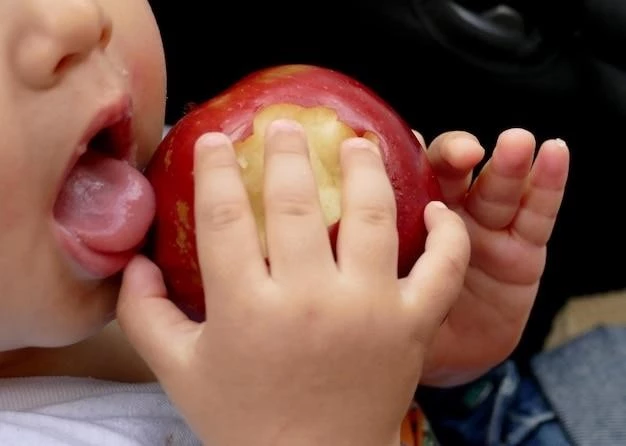Introduction
The condition of Tibial Hemimelia Cleft Lip Palate is characterized by various anomalies, including bilateral Tibial Hemimelia and widely spaced Cleft Lip and Palate․ Reviewing reported cases and studies can provide insights into the genetic inheritance patterns related to this complex condition․
The co-occurrence of Tibial Hemimelia and Cleft Lip Palate presents a rare and complex medical condition․ Cases reported highlight a potential genetic linkage with autosomal recessive inheritance, requiring a detailed understanding of the anomalies to develop appropriate treatment strategies․ The manifestation of Tibial Hemimelia, characterized by tibia deficiency or abnormal development, alongside Cleft Lip Palate, involving openings in the lip or palate, poses unique challenges in diagnosis and management․ Genetic factors play a significant role in the development of these anomalies, emphasizing the need for comprehensive genetic evaluation and counseling in affected individuals․ Further studies and reports shed light on the intricate relationship between Tibial Hemimelia and Cleft Lip Palate, contributing to a deeper understanding of this multifaceted condition․
Cleft Lip and Cleft Palate
In general, cleft lip and cleft palate are common congenital anomalies characterized by openings or splits in the upper lip, palate, or both․ These conditions, often occurring in isolation, impact feeding and speech development, requiring specialized treatment approaches․
Overview of Tibial Hemimelia Cleft Lip Palate
Detailed examination of reported cases reveals a complex interplay between Tibial Hemimelia and Cleft Lip Palate, suggesting potential genetic implications from consanguineous parents․ The presence of bilateral Tibial Hemimelia alongside widely spaced Cleft Lip and Palate highlights the intricate nature of this rare condition, necessitating a comprehensive genetic evaluation for accurate management;
Symptoms and Diagnosis
Symptoms of Tibial Hemimelia Cleft Lip Palate may include skeletal abnormalities in the lower limbs, such as tibial deficiencies, along with characteristic facial clefting․ The diagnosis often involves a thorough physical examination, imaging studies to assess limb anomalies, and genetic testing to identify underlying causes; Recognizing the distinct features of both Tibial Hemimelia and Cleft Lip Palate is crucial for accurate diagnosis and appropriate management․
Treatment Options
The treatment for Tibial Hemimelia Cleft Lip Palate involves a multidisciplinary approach, often combining surgical interventions to address limb anomalies associated with Tibial Hemimelia and corrective surgeries for Cleft Lip Palate․ The management plan may include limb lengthening procedures, orthotic devices, speech therapy, and specialized feeding techniques to maximize functional outcomes and improve the quality of life for affected individuals․ Long-term follow-up care is essential to monitor progress and address any potential complications that may arise post-treatment․

Tibial Hemimelia
Tibial Hemimelia is a rare lower-extremity condition characterized by complete or partial absence of the tibia․ This congenital anomaly affects the development of the lower leg bones and may present with unique challenges in diagnosis and treatment․
Understanding Tibial Hemimelia
Tibial Hemimelia is a rare lower-extremity condition characterized by the partial or complete absence of the tibia bone․ This congenital anomaly can manifest unilaterally or bilaterally, leading to significant challenges in limb development and functionality․ Understanding the specific characteristics and implications of Tibial Hemimelia is crucial for accurate diagnosis and tailored treatment plans․
Types and Characteristics
Tibial Hemimelia presents in various forms, ranging from partial absence of the tibia to complete tibial deficiency․ The condition may affect one or both legs, leading to significant differences in leg length and structural abnormalities; Understanding the distinct types and characteristics of Tibial Hemimelia is crucial for determining appropriate treatment strategies tailored to each individual case․
Incidence and Genetic Factors
The incidence of Tibial Hemimelia is considered rare, with a prevalence of about 1 in every 1 million births․ Genetic factors, particularly autosomal recessive inheritance, have been implicated in some cases, highlighting the potential role of consanguineous parents in transmitting the condition․ Understanding the genetic underpinnings of Tibial Hemimelia is essential for comprehensive diagnosis and genetic counseling in affected families․
Reported cases suggest a genetic association between Tibial Hemimelia and Cleft Lip Palate, with some instances indicating autosomal recessive inheritance․ Understanding the genetic link is vital in managing this complex condition․
Relationship between Tibial Hemimelia and Cleft Lip Palate
Reported cases and studies highlight the intriguing genetic linkage between Tibial Hemimelia and Cleft Lip Palate․ Instances like the Brazilian boy with bilateral Tibial Hemimelia and widely spaced Cleft Lip and Palate from consanguineous parents underscore the potential autosomal recessive inheritance pattern․ Further research sheds light on the complex relationship between these conditions․
Association with Other Anomalies
Individuals with Tibial Hemimelia and Cleft Lip Palate may exhibit other anomalies such as congenital heart defects, pseudo-hermaphroditism, or cryptorchidism․ The presence of additional anomalies underscores the complexity of this condition and the need for comprehensive management strategies․
Case Studies
Reported cases include a Brazilian boy with bilateral tibial hemimelia and widely spaced cleft lip and palate, highlighting potential autosomal recessive inheritance patterns․ Understanding these complex cases aids in genetic counseling and treatment․
Brazilian Boy with Tibial Hemimelia and Cleft Lip Palate
Describing a case of a Brazilian boy born to consanguineous parents with bilateral tibial hemimelia and widely spaced cleft lip and palate․ The presence of autosomal recessive inheritance patterns indicates the need for genetic counseling in similar cases․
Japanese Brothers with Tibial Hemimelia
Japanese brothers, aged 6 and 2 years, with Tibial Hemimelia were reported․ Born to unrelated, phenotypically normal parents, these cases underscore the diverse nature of Tibial Hemimelia and emphasize the importance of genetic evaluation in understanding such anomalies․
Treatment for Tibial Hemimelia Cleft Lip Palate involves a comprehensive approach, addressing limb anomalies and facial clefting through surgical interventions․ The management may include limb lengthening procedures, orthotic devices, and corrective surgeries to improve function and aesthetics․
Surgical interventions play a crucial role in managing Tibial Hemimelia․ Case studies of a Brazilian boy with bilateral Tibial Hemimelia and widely spaced Cleft Lip and Palate highlight the importance of addressing both limb anomalies and orofacial clefting through a comprehensive surgical approach tailored to the individual’s unique needs․ These interventions aim to improve limb function and aesthetics, ultimately enhancing the quality of life for affected individuals․

Treatment Approaches
Management of Cleft Lip and Palate anomalies involves a multidisciplinary strategy that may include surgical interventions, speech therapy, and orthodontic care․ Surgical repair aims to restore function and aesthetics, while comprehensive care addresses long-term well-being and quality of life․
Genetic Considerations
Genetic considerations play a crucial role in understanding Tibial Hemimelia Cleft Lip Palate․ Cases like the Brazilian boy with bilateral Tibial Hemimelia and widely spaced Cleft Lip and Palate highlight potential autosomal recessive inheritance patterns, emphasizing the importance of genetic counseling and comprehensive evaluation for affected individuals․
Autosomal Dominant and Recessive Inheritance
Autosomal recessive inheritance patterns have been observed in cases like the Brazilian boy with bilateral Tibial Hemimelia and widely spaced Cleft Lip and Palate․ This genetic consideration underscores the importance of thorough genetic evaluation in understanding and managing this complex condition․
Syndromes Associated with Tibial Hemimelia-Cleft Lip Palate
Various syndromes such as the Gollop-Wolfgang complex have been associated with Tibial Hemimelia-Cleft Lip Palate, presenting combinations of anomalies like congenital heart defects, mandibulofacial dysostosis, or pseudo-hermaphroditism․ Understanding these syndromes is crucial for comprehensive management and genetic counseling in affected individuals․
Prognosis and Long-Term Outcomes
The prognosis for individuals with Tibial Hemimelia and Cleft Lip Palate depends on the severity of the anomalies and the effectiveness of treatment interventions․ Long-term outcomes focus on maximizing functional abilities and aesthetics, with rehabilitation and follow-up care playing a crucial role in ensuring optimal quality of life for affected individuals․
Impact on Quality of Life
Individuals with Tibial Hemimelia and Cleft Lip Palate may face challenges impacting their quality of life, including issues related to mobility, speech, and aesthetics․ Comprehensive care and support are essential to address these concerns and enhance the overall well-being of affected individuals․
Rehabilitation and Follow-Up Care
Rehabilitation and long-term follow-up care are essential components of managing individuals with Tibial Hemimelia and Cleft Lip Palate․ These individuals may require ongoing support to address mobility challenges, speech development, and overall well-being․ Regular assessments and interventions can help optimize outcomes and enhance the quality of life for affected individuals, focusing on comprehensive care and individualized support․
